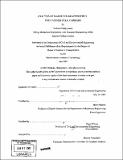| dc.contributor.advisor | Henry Marcus. | en_US |
| dc.contributor.author | Hadjiyiannis, Nicholas | en_US |
| dc.contributor.other | Massachusetts Institute of Technology. Dept. of Civil and Environmental Engineering. | en_US |
| dc.date.accessioned | 2007-09-28T13:17:44Z | |
| dc.date.available | 2007-09-28T13:17:44Z | |
| dc.date.copyright | 2007 | en_US |
| dc.date.issued | 2007 | en_US |
| dc.identifier.uri | http://hdl.handle.net/1721.1/38952 | |
| dc.description | Thesis (S.M.)--Massachusetts Institute of Technology, Dept. of Civil and Environmental Engineering, 2007. | en_US |
| dc.description | Includes bibliographical references (leaves 200-205). | en_US |
| dc.description.abstract | Iron ore and coal play a key role in the global economy and their consumption per capita is indicative of a country's standard of living. Their vast majority is transported by sea, making many countries rely on the efficiency and cost of transportation by capes. The cape market has closely followed the dry bulk market since the introduction of capes in the late 1960s. It is highly cyclical, creating big investment opportunities with potential for high and fast returns. China's recent economic expansion has impacted capes in particular as they account for the vast majority of iron ore transportation. The rapid increase in demand combined with the short-run inelasticity of supply due to capacity constraints has led to a record-high market. This combined with lack of confidence has some very interesting implications. The price gap between newer and older vessels has narrowed significantly, while a modern cape is worth about 50% more than ordering a new building. Since 1986 when a 9-year-old cape was of scrap value, the market has moved to the opposite extreme with a 13-year-old cape worth as much as a newbuilding. | en_US |
| dc.description.abstract | (cont.) The industry and its development is analyzed before focusing on the current market and its prospects. Extensive analysis is carried out on a wide range of factors contributing to the outcome of the market in terms of freight rates, time charter rates, ship values and newbuilding prices. Examples include Chinese steel production and iron ore imports, Australian port congestion and queue lengths, oil prices, newbuilding orders and delivery times, the orderbook and the scrapping pool, all of which are at record high levels. Other factors include exchange rates, GDP growth, policies and demolition rates. The analysis is carried out using databases of newbuilding orders, fixtures and S&P transactions as well as a wide range of numerical data from a variety of sources. The futures market is also investigated, as well as its relation to the physical market. A wide range of current investment opportunities are finally considered from a buyer's and a seller's perspective. These are analyzed and compared before making the relevant recommendations. | en_US |
| dc.description.statementofresponsibility | by Nicholas Hadjiyiannis. | en_US |
| dc.format.extent | 205 leaves | en_US |
| dc.language.iso | eng | en_US |
| dc.publisher | Massachusetts Institute of Technology | en_US |
| dc.rights | M.I.T. theses are protected by copyright. They may be viewed from this source for any purpose, but reproduction or distribution in any format is prohibited without written permission. See provided URL for inquiries about permission. | en_US |
| dc.rights.uri | http://dspace.mit.edu/handle/1721.1/7582 | |
| dc.subject | Civil and Environmental Engineering. | en_US |
| dc.title | Analysis of market characteristics for capesize bulk carriers | en_US |
| dc.type | Thesis | en_US |
| dc.description.degree | S.M. | en_US |
| dc.contributor.department | Massachusetts Institute of Technology. Department of Civil and Environmental Engineering | |
| dc.identifier.oclc | 166273530 | en_US |

